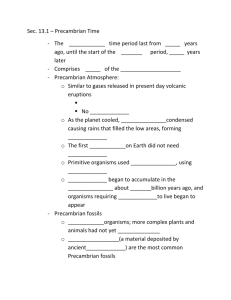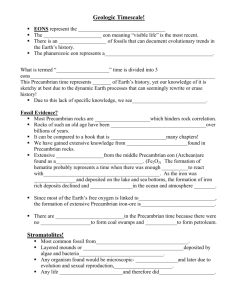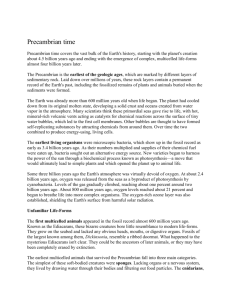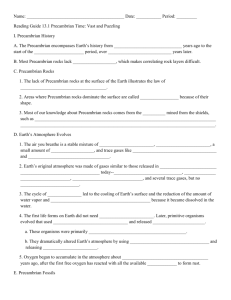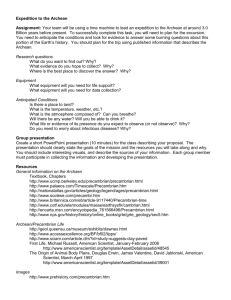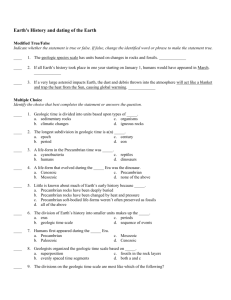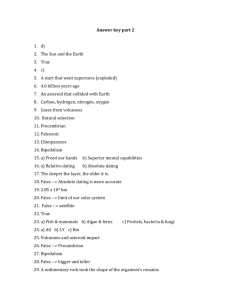Section 13.1 Precambrian Time
advertisement
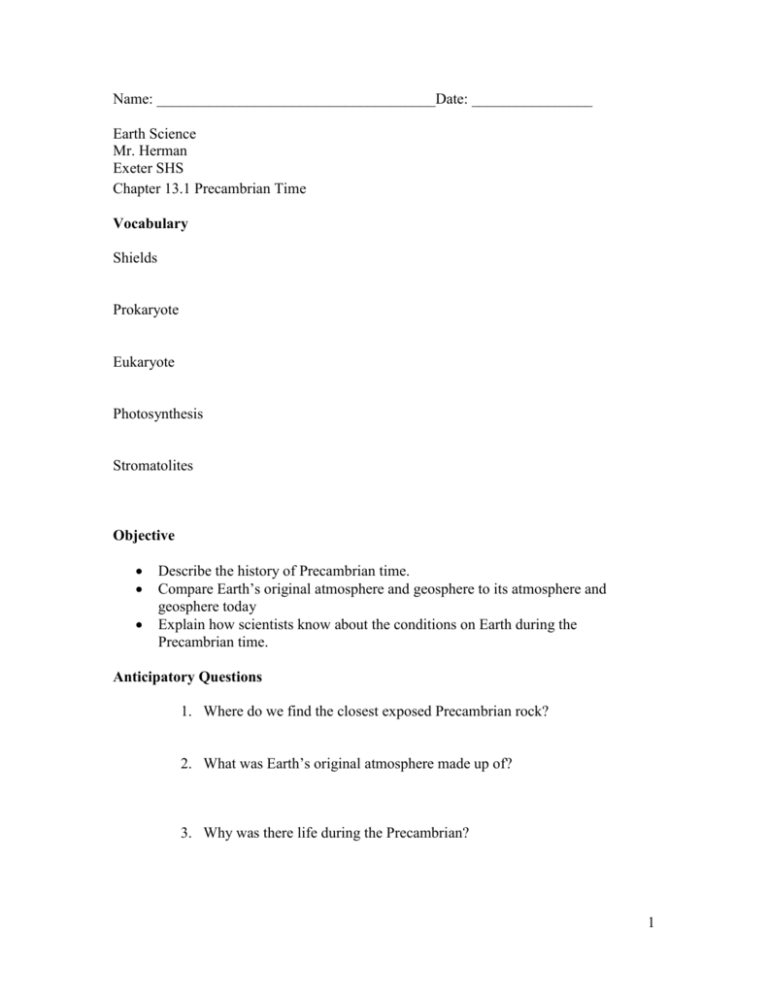
Name: _____________________________________Date: ________________ Earth Science Mr. Herman Exeter SHS Chapter 13.1 Precambrian Time Vocabulary Shields Prokaryote Eukaryote Photosynthesis Stromatolites Objective Describe the history of Precambrian time. Compare Earth’s original atmosphere and geosphere to its atmosphere and geosphere today Explain how scientists know about the conditions on Earth during the Precambrian time. Anticipatory Questions 1. Where do we find the closest exposed Precambrian rock? 2. What was Earth’s original atmosphere made up of? 3. Why was there life during the Precambrian? 1 Precambrian History The Precambrian encompasses immense geological time, from Earth’s distant beginnings 4.56 billion years ago until the start of the Cambrian period, over 4 billion years later. Precambrian Rocks Shields are large, relatively flat expanses of ancient metamorphic rock within the stable continental interior. Much of what we know about Precambrian rocks comes from ores mined from shields. Precambrian Atmosphere Earth’s original atmosphere could not support life as we know it now. The atmosphere was composed of gases similar to those released by volcanoes; water vapor, CO2, N2 and several other trace gases. No O2 Later organism evolved that used photosynthesis and released O2 Oxygen began to accumulate in the atmosphere about 2.5 million years ago Precambrian Fossils The most common Precambrian fossils are stromatolites. Stromatolites are distinctively layered mounds or columns of calcium carbonate. They are not the remains of actual organisms but are the material deposited by algae. Many of these ancient fossils are preserved in chert—a hard dense chemical sedimentary rock. Precambrian Pennsylvania During the Precambrian, Pennsylvania was mainly a low, featureless plain sloping gently southeastward toward the sea. Most of Pennsylvania's exposed Precambrian rocks are metamorphic and igneous, and thus lack fossils. 2
